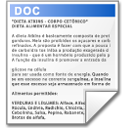Island selection on mammalian life-histories: genetic differentiation in offspring size
Lataukset:
Mappes, T., Grapputo, A., Hakkarainen, H., Huhta, E., Koskela, E., Saunanen, R. & Suorsa, P. (2008). Island selection on mammalian life-histories: genetic differentiation in offspring size. BMC Evolutionary Biology, 8:296. doi:10.1186/1471-2148-8-296
Julkaistu sarjassa
BMC Evolutionary BiologyTekijät
Päivämäärä
2008Tekijänoikeudet
© 2008 Mappes et al; licensee BioMed Central Ltd.
This is an Open Access article distributed under the terms of the Creative Commons Attribution License (http://creativecommons.org/licenses/by/2.0), which permits unrestricted use, distribution, and reproduction in any medium, provided the original work is properly cited.
BACKGROUND:
Since Darwin's pioneering work, evolutionary changes in isolated island populations of vertebrates have continued to provide the strongest evidence for the theory of natural selection. Besides macro-evolutionary changes, micro-evolutionary changes and the relative importance of natural selection vs. genetic drift are under intense investigation. Our study focuses on the genetic differentiation in morphological and life-history traits in insular populations of a small mammal the bank vole Myodes glareolus.
RESULTS:
Our results do not support the earlier findings for larger adult size or lower reproductive effort in insular populations of small mammals. However, the individuals living on islands produced larger offspring than individuals living on the mainland. Genetic differentiation in offspring size was further confirmed by the analyses of quantitative genetics in lab. In insular populations, genetic differentiation in offspring size simultaneously decreases the additive genetic variation (VA) for that trait. Furthermore, our analyses of differentiation in neutral marker loci (Fst) indicate that VA is less than expected on the basis of genetic drift alone, and thus, a lower VA in insular populations could be caused by natural selection.
CONCLUSION:
We believe that different selection pressures (e.g. higher intraspecific competition) in an insular environment might favour larger offspring size in small mammals. Island selection for larger offspring could be the preliminary mechanism in a process which could eventually lead to a smaller litter size and lower reproductive effort frequently found in insular vertebrates. ...
...
 ...
...
Julkaisija
BioMed CentralISSN Hae Julkaisufoorumista
1471-2148Asiasanat
Metadata
Näytä kaikki kuvailutiedotKokoelmat
Lisenssi
Ellei muuten mainita, aineiston lisenssi on © 2008 Mappes et al; licensee BioMed Central Ltd.
This is an Open Access article distributed under the terms of the Creative Commons Attribution License (http://creativecommons.org/licenses/by/2.0), which permits unrestricted use, distribution, and reproduction in any medium, provided the original work is properly cited.
Samankaltainen aineisto
Näytetään aineistoja, joilla on samankaltainen nimeke tai asiasanat.
-
Cost of reproduction and offspring quality in the evolution of reproductive effort
Oksanen, Tuula (University of Jyväskylä, 2002)Any organism has a limited amount of resources, which have to be partitioned among several activities such as maintenance, growth and reproduction. Reproductive effort is defined as the proportion of parental resources ... -
Frequency and Density-Dependent Selection on Life-History Strategies - A Field Experiment
Mappes, Tapio; Koivula, Minna; Koskela, Esa; Oksanen, Tuula A.; Savolainen, Tiina; Sinervo, Barry (Public Library of Science, 2008)Negative frequency-dependence, which favors rare genotypes, promotes the maintenance of genetic variability and is of interest as a potential explanation for genetic differentiation. Density-dependent selection may also ... -
New insights on the role of ecology and life-history in social evolution
Avila, Piret (University of Jyväskylä, 2017)Biological altruism, defined as a behaviour that benefits others at an apparent cost to the focal individual, is found abundantly across different levels of biological organization. While kin selection has been useful for ... -
Limited effects of size-selective harvesting and harvesting-induced life-history changes on the temporal variability of biomass dynamics in complex food webs
Nonaka, Etsuko; Kuparinen, Anna (Elsevier, 2023)Harvesting has been implicated in destabilizing the abundances of exploited populations. Because selective harvesting often targets large individuals, some studies have proposed that exploited populations often experience ... -
The relative roles of natural and sexual selection in the evolution of tardigrade gamete morphology
Ryndov, Serge (2021)Siittiösolut ovat eläinkunnassa esiintyvistä solutyypeistä monimuotoisin ryhmä. Siittiösoluissa esiintyvän muuntelun on useissa eläintaksoneissa havaittu olevan yhteydessä parittelun jälkeisen seksuaalivalinnan tasoon sekä ...
Ellei toisin mainittu, julkisesti saatavilla olevia JYX-metatietoja (poislukien tiivistelmät) saa vapaasti uudelleenkäyttää CC0-lisenssillä.



